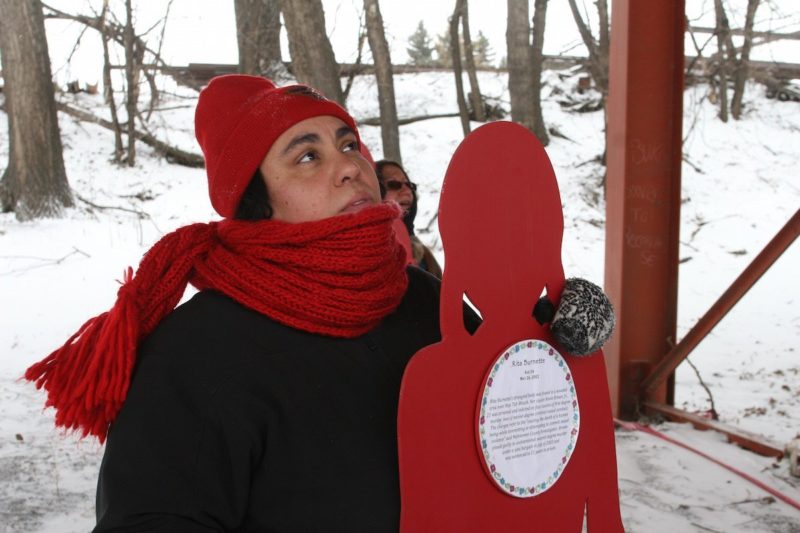Conspiracy of Indifference: Press and Police Ignore Violence Against Native Women
In Indian country, cases of the missing and murdered are often not covered by the media. They grow cold and are forgotten.

This piece, the fourth and final installment, was cross-posted from Indian Country Today with permission as part of a joint series about the missing and murdered Native women in the United States and Canada. You can read the other pieces in the series here.
The “missing white woman syndrome,” explains the lack of media attention for missing Native women, according to Makoons Miller Tanner of Duluth. “Pretty, young, middle class white women make good victims versus Native women who may have criminal pasts,” noted Miller Tanner, who maintains the Justice for Native Women blog.
In Indian country, cases of the missing and murdered are often not covered by the media. They grow cold and are forgotten.
Sarah Deer, professor of law at William Mitchell College of Law who has an extensive history of working to end violence against Native women, described the lack of data and attention to missing and murdered Native women as a conspiracy of indifference on the part of the U.S. government and law enforcement. “If we had the funding to search and assess our data, I think we would find that we in the U.S. have absolutely similar numbers to Canada in terms of missing and murdered women,” she said.
(Read more about the U.S. government and law enforcement’s responses to the violence against Native women in the second and third installments of this series, here and here.)
According to a 2015 report by the Royal Canadian Mounted Police, nearly 1,200 Indigenous women have gone missing or were murdered between 1980 and 2012. In 2014, 11 indigenous women went missing. Advocates claim that the actual number is much higher.
Deer noted that the United States and Canada have similar social and economic dynamics affecting Indigenous women such as histories of boarding schools and migration to urban settings. “We share a parallel trauma,” she noted. “Terrible things happen to our women, but it never seems to reach a priority among law enforcement. Our communities must empower themselves at the grassroots level to make change, otherwise it will never happen.”
Change is beginning to come, and as Deer noted, it is at the grassroots level. There are numerous ad hoc efforts to keep databases of missing and murdered Native women, as well as a growing number of social media sites dedicated to spreading the word about missing girls and women in Indian country.
The Save Wiyabi Project (“Wiyabi” is Assiniboine for “women”), the Justice for Native Women blog, and the Sing Our Rivers Red project are examples of such groups.
Lauren Chief Elk and Laura Madison created a map as part of the Save Wiyabi Project to help track missing and murdered women. “This was created by Indigenous women for Indigenous women, because our governments and media erase the large scale violence against us,“ according to a statement explaining the site.
According to Chief Elk, Save Wiyabi has verified 1,050 violent incidents involving Indigenous women, those who have disappeared, been murdered, or been assaulted. “We also found that many of the tribal law enforcement agencies we contacted basically have no established procedures at all for collecting missing person’s reports,” she said.
“There seems to be a very cavalier attitude about missing women even among our own people.”
